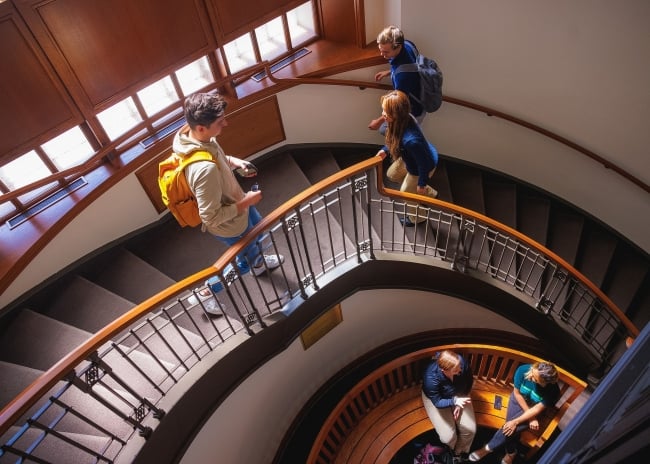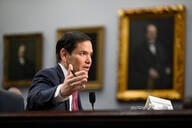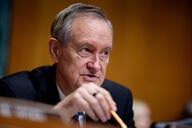You have /5 articles left.
Sign up for a free account or log in.

DePaul’s budget gap comes as many Catholic institutions are struggling.
DePaul University/Facebook
As Roman Catholic institutions around the U.S. close and merge, DePaul University has remained strong, with enrollment reaching roughly 21,000 last fall. But that doesn’t make it immune to the business struggles gripping higher education institutions—especially private religious ones: DePaul faces a budget gap of $56 million for the upcoming fiscal year.
Now the Chicago institution is moving forward with a plan to fix its budget projections—including measures that will likely include shedding employees and programs.
Given its historically strong enrollment, large alumni base and endowment of over $825 million, DePaul will likely rebound and does not appear at risk of closing or merging, as many other Catholic colleges have. But its struggles raise a question: What does it mean for Catholic higher education if one of the largest and most well-known institutions is facing such a severe budget gap?
DePaul’s Business Challenges
Many Catholic colleges have deeper pockets than DePaul, including the University of Notre Dame, Georgetown University and Boston College, to name a few. But DePaul has been a constant enrollment leader in terms of volume for a number of years, surpassing other Catholic institutions with stronger academic reputations and higher demand for admissions.
Being an institution of 21,000 students, however, means sustaining a sizable workforce and extensive facilities while navigating the difficult headwinds of higher education. Experts and insiders suggest that the market challenges that have driven other institutions out of business are on DePaul’s doorstep, leaving leaders looking for a way to plug the $56 million budget gap and employees anxious about what the future holds.
DePaul president Robert Manuel noted the budget challenges in a statement to Inside Higher Ed.
“Like almost every higher education institution across the country, DePaul is working to design a budget that enables us to deliver a quality and impactful education that best serves our students. Grounding ourselves in our Catholic, Vincentian mission is critical to our continued relevance as an institution of higher education and guides us in these difficult financial decisions,” Manuel wrote.
DePaul attributed the budget gap to a number of factors: changing enrollment demographics nationwide, including a decrease in graduate school enrollment; the discontinuation of coronavirus relief funds from the federal government; rising operational costs driven by inflation; and increases in need-based and merit-based financial aid.
While DePaul’s high enrollment stands out among Catholic colleges, it has lost students in recent years, particularly at the graduate level. In fall 2019—the year before the coronavirus pandemic, which slowed enrollment trends nationwide—DePaul enrolled 14,214 undergraduates and 7,850 graduate students, according to university data. As of fall 2022, DePaul’s head count had dropped to 14,134 undergraduates and 6,873 graduate students, the data show.
According to Matthew Krause, director of business and administration for the University Library and a staff representative on DePaul’s Strategic Resource Allocation Committee, DePaul may be struggling, but it is not facing a financial crisis. Rather, it’s experiencing a correctable budget gap caused by declining graduate enrollment and tuition revenues, as well as the ever-rising “cost of doing business” during a period when inflation has chased historic highs.
He noted via email that enrollment in graduate business programs “has been a large source of revenue” but is on the decline—a trend he attributes to current high workforce demands.
Krause also pointed to the university’s subsidization of “undergraduate tuition at increasingly higher rates” to recruit and support low-income and first-generation students as another factor driving DePaul’s budget issues.
“I’ve reviewed DePaul’s audited financial statements from the last ten years and see that financial aid provided to students has increased 2.5 times faster than tuition income. That trend will continue, with the next FY24 budget projecting a 3% increase in tuition income and 6% increase to financial aid. Before we even consider spending, this puts a big strain on the budget,” Krause wrote.
In a statement, DePaul also pointed to its commitment to first-generation students, noting that they make up about one-third of the undergraduate population. Low-income students also form a sizable portion of enrollments, with nearly 5,000 students—almost a quarter of the study body—receiving Pell Grants for the 2021–22 academic year, according to the latest available data.
Now, as DePaul seeks to ensure continued access to underserved students, it is moving forward with a plan to offer incentives to employees willing to depart voluntarily and to eliminate unfilled positions. It is also reviewing “teaching considerations based on enrollment and class scheduling to reduce redundant sections and vacant lines,” the statement noted, hinting at cuts ahead.
DePaul already announced last month that it will not renew certain faculty appointments. Those cuts were the first part of an effort to close the projected budget gap ahead of the 2024 fiscal year, which begins July 1. The next steps include making a budget proposal to DePaul’s governing board next week, with a final university budget to be published June 30.
Sector Challenges
DePaul may not be facing an existential crisis, but many other religious colleges across the U.S. are. Multiple Catholic institutions have announced closures in recent months due to challenges largely related to enrollment and financial issues. They include Cardinal Stritch University, Presentation College and Holy Names University; others, such as Medaille University, will be absorbed in mergers.
Non-Catholic religious colleges that have recently announced closures include Iowa Wesleyan University and Finlandia University. Some, like The King’s College and Birmingham-Southern College, are clinging to life, seeking cash infusions to keep their doors open amid business challenges.
These closures and mergers come as enrollment remains sluggish across the nation.
David Rowe, senior vice president and managing principal of AGB Consulting, suggested that the business issues facing Catholic colleges mirror those afflicting private higher education at large. In particular, he noted enrollment declines and the disappearance of federal coronavirus relief funds that flowed freely during the pandemic.
Tim Fuller, founder of the consulting firm Fuller Higher Ed Solutions, concurred, noting that federal coronavirus relief funds offered colleges “a strategic time-out.” But with the federal relief spigot turned off, Fuller thinks more college closures are on the horizon.
Citing the high number of Catholic colleges—compared to institutions affiliated with other denominations—Rowe said their struggles are largely due to overrepresentation.
“Many schools, regardless of affiliation, are operating in the same disrupted higher education marketplace,” Rowe told Inside Higher Ed via email. “The challenges that DePaul has are less related to its Roman Catholic identity than its identity as a traditional private university. The truth of the matter is that Catholicism and other religious denominations pioneered higher education in this country. Catholic colleges are the largest single grouping of religiously affiliated private nonprofit colleges in the United States. So, if [Catholic institutions] appear to be in the news more than other groups of colleges, it is likely because there simply are more of them.”
Beyond higher education headwinds, religious colleges are also navigating increasing secularization. A Gallup survey from last year illustrated how faith in the U.S. is changing; it found that 81 percent of Americans believe in God, down from 92 percent in 2011. Likewise, the Pew Research Center found this year that only 30 percent of Americans attend religious services monthly.
Rowe suggested that “secularization is no more a problem now for higher education than it has been for the last 50 years,” since religious colleges “have adapted to pluralistic student bodies.”
But Rowe also noted that religious institutions face unique challenges, including “religious orders whose memberships are aging and shrinking,” which has led more institutions to hire lay presidents.
Fuller indicated that the challenge of secularization may affect colleges differently depending on how ingrained their religious identity is to their brand. While some colleges structure their entire experience around their religious affiliation, others treat it more as a matter of history—something that is germane to institutional values but does not heavily shape the overall student experience.
The big takeaway, said Fuller, isn’t that religious colleges are struggling, but rather that all institutions—including strong, well-positioned ones—are being battered by market forces.
“Everybody is dealing with challenges,” Fuller said. “The fact that DePaul, with the strength of its brand and quality of education it delivers, is dealing with these challenges makes them even more real.”




